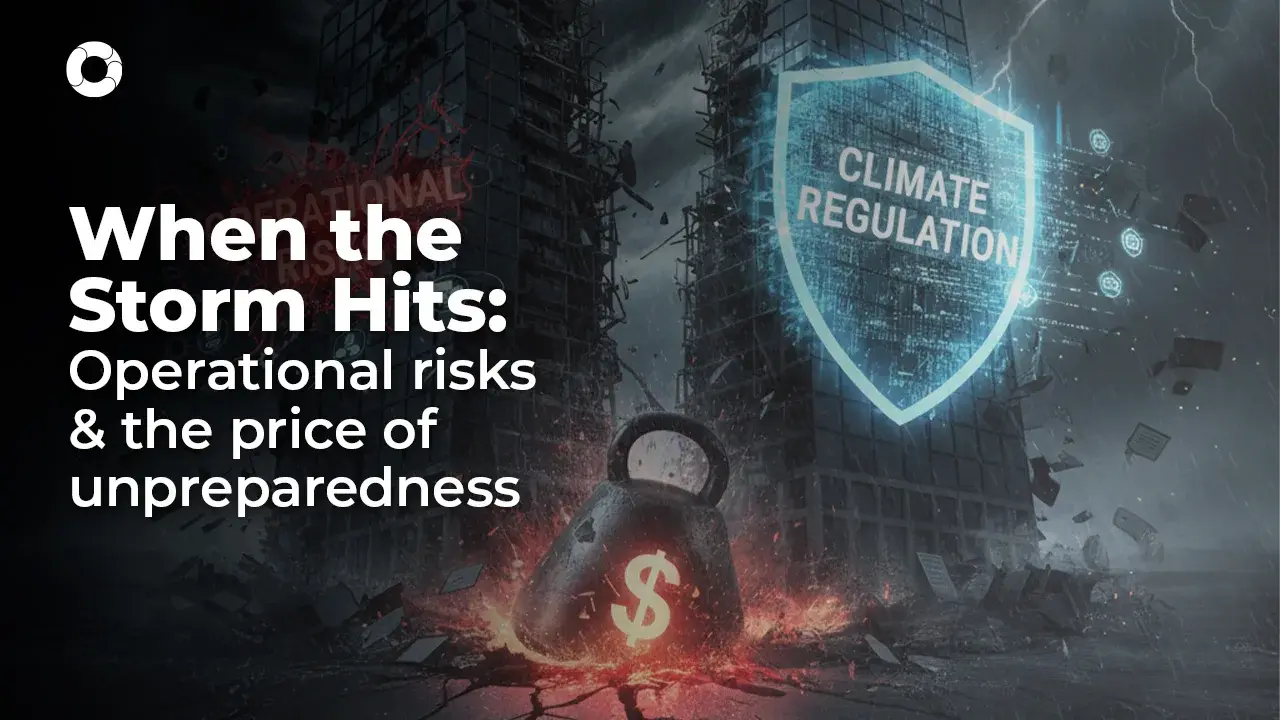What you need to know about action plans

When aiming to achieve a goal, one of the most effective tools at our disposal is an action plan. This plan outlines everything we need to do—activities, tools, resources, and more—to reach our objective. The same applies in risk management, where our main goal is to prevent, correct, or detect events that pose a threat to the organization.
Any risk within a company represents a potential loss, whether due to internal issues (such as process failures, technology, or financial factors) or external causes. Therefore, when such events are identified, controls must be implemented to mitigate them. This is where the action plan becomes essential.
What Is an Action Plan in Risk Management?
An action plan can be defined as a strategy composed of multiple activities aimed at mitigating risks by strengthening the association with controls and key events in the risk lifecycle. The plan outlines the goal, timeline, required resources, and the individuals responsible for carrying it out—ensuring that risks are managed promptly and effectively.
In a risk management context, an action plan not only aims to reduce the likelihood of adverse events but also to minimize their impact if they occur. To be truly effective, the plan must align with the organization’s strategic objectives and be based on a thorough risk assessment.
Two Main Types of Action Plans
1. Preventive Actions:
These are triggered when a process or element lacks proper controls to prevent a specific risk. A risk analysis is conducted, followed by the creation of controls to mitigate the threat.
Example:
A construction company decides to buy a large warehouse to store its heavy machinery. A preventive action would focus on securing the warehouse. The action plan might include installing a surveillance system, hiring a security company, etc.
2. Corrective Actions:
These are implemented after a risk has already materialized, focusing on mitigating its impact and preventing recurrence.
Example:
The construction company experiences project delays due to a supplier failing to deliver materials on time. A corrective action plan could involve building a 2–3 month inventory buffer or diversifying suppliers.
Why Is an Action Plan Important?
Not having an action plan is a risk in itself. Without a clear course of action, unforeseen events can disrupt business operations. A well-structured action plan provides many benefits:
-
Reduced uncertainty: Clear steps during crises help avoid chaos.
-
Reputation protection: Poor crisis management can damage stakeholder trust.
-
Regulatory compliance: Many regulations require documented action plans.
-
Better decision-making: Enables agile and effective responses to unexpected events.
Effective action plans not only protect operations but also foster a culture of resilience and risk awareness.
Types of Action Plans in a Company
Depending on the nature of the risk and specific circumstances, companies may use various types of action plans:
-
Corrective Action Plans: Respond to issues found during audits, incidents, or operational failures, with a focus on remediation and prevention.
-
Preventive Action Plans: Aim to anticipate potential risks and put controls in place before they become actual threats.
-
Contingency Plans: Address critical or unexpected events that could disrupt business continuity (e.g., cyberattacks or supply chain disruptions).
All action plans must be aligned with business objectives and reviewed periodically for relevance and effectiveness.
Benefits of Implementing Action Plans in Risk Management
A well-executed action plan offers several advantages:
-
Protects the company’s operational and financial stability
-
Enhances trust among clients and regulators
-
Minimizes exposure to fines and penalties
-
Encourages a culture of prevention and resilience
Download Our Action Plan Matrix Template
To help you implement your action plans, Pirani offers an editable matrix template. This tool allows you to clearly organize all necessary activities to prevent or correct risks. It includes fields to define the objective, list specific actions, assign responsibilities, set deadlines, and monitor progress. Simply download, customize, and start managing your risks efficiently.
Common Mistakes When Creating an Action Plan (and How to Avoid Them)
Despite their importance, many companies fall into pitfalls that reduce the effectiveness of their action plans:
-
Outdated plans: A plan that isn’t updated regularly is almost useless.
-
Vague objectives: Without specific goals, the plan lacks direction.
-
Lack of accountability: Without designated owners, actions won’t be executed on time.
Stages of an Action Plan
1. Objectives
Define what you want to achieve. This step sets the direction for the activities needed and the events or controls it will address.
2. Plan Activities
These are all the steps required to achieve the objective. Start with the planning, follow through with execution, and conclude with verification to evaluate effectiveness. A good practice is to order activities chronologically for better clarity.
3. Roles and Responsibilities
Several people may be involved in an action plan:
-
The Plan Administrator: Outlines the roadmap, assigns responsibilities, monitors progress, and verifies goal achievement.
-
Plan Owner: Ensures timely and proper execution of the plan.
-
Execution Owners: Carry out each assigned activity.
4. Deadlines
Every action plan must have a start and end date. Deadlines focus the team and ensure timely completion of tasks.
3 Key Elements of an Effective Action Plan
To avoid becoming just another shelved document, every action plan must include:
-
Clear, measurable objectives: Define what success looks like and how it will be measured.
-
Assigned roles and timelines: Without ownership and deadlines, tasks can fall through the cracks.
-
Monitoring and adjustment mechanisms: A plan must be dynamic—ongoing review is essential for continuous improvement.
How to Write an Action Plan Step-by-Step
Creating an effective action plan requires structure:
-
Define the risk or issue to address
-
Set specific, measurable goals
-
Design mitigation strategies
-
Assign responsibilities and deadlines
-
Implement monitoring mechanisms
An effective action plan defines what needs to be done, how it will be done, and by whom—ensuring flawless execution.
The Perfect Action Plan?
It doesn't exist. There’s no one-size-fits-all formula. The more you experiment with action planning, the more effective your plans become. Trial and error reveal what works and what doesn’t. Ideally, each plan should include a variety of actions to better control risks or events.
Executing a Risk Action Plan
Pirani’s risk management software includes a module dedicated to action plans. It lets you create plans with assigned tasks, start and end dates, progress tracking, and associations with specific risks, processes, controls, or events. Discover how our platform can simplify risk management for your organization.
Following Up and Evaluating a Risk Action Plan
Once a risk mitigation plan is in place, the follow-up phase is just as critical. A plan is only as good as its execution and measurable results. In this section, we explain how to track and assess your plan's success, which indicators to use, and how to ensure your plan stays actionable.
Why Monitoring Your Action Plan Is Crucial
An action plan without monitoring is like a GPS without signal: you have a route, but no idea if you're on track. Monitoring helps you:
-
Identify delays or bottlenecks
-
Adjust actions when needed
-
Measure actual risk mitigation
-
Document lessons learned for future plans
Key Indicators for Evaluating an Action Plan
Effective monitoring requires KPIs for both execution and impact:
-
% of tasks completed vs planned
-
Average execution time per task
-
Risk mitigation level (before vs after)
-
Number of rescheduled or modified activities
-
On-time delivery rate by responsible parties
Tools to monitor Action Plans
Depending on your organization’s size and maturity, you can use anything from spreadsheets to dedicated risk management software. With Pirani, you can:
-
Assign tasks
-
Set deadlines
-
Track progress with visual indicators
-
Link plans to risks, controls, or events
-
Generate reports for audits or management reviews
What should be covered in follow-up meetings?
Regular review meetings help enforce discipline. Make sure to discuss:
-
Which tasks were completed and on time
-
Obstacles encountered
-
Adjustments needed
-
Any new related risks identified
What if an Action Plan fails?
Even well-executed plans may fail to mitigate a risk. If that happens:
-
Review the initial risk analysis
-
Reevaluate the action strategy
-
Collect feedback from the execution team
-
Document lessons learned
Final Thoughts: Turning plans into real results
Action plans help translate intentions into tangible actions that mitigate risks and correct adverse events, ultimately improving organizational performance and resilience.
By clearly outlining what needs to be done and how to do it, action plans become essential tools for effective risk management.
Did you find this content on action plans to consider in risk management within an organization useful? Leave us your comments.
You May Also Like
These Related Stories

Importance of key indicators in risk management

When the Storm Hits: Managing Operational and Climate Risks Effectively

What You Should Know About Key Risk Indicators (KRIs)

5 steps to make a risk map

How to make a risk matrix for your company



No Comments Yet
Let us know what you think